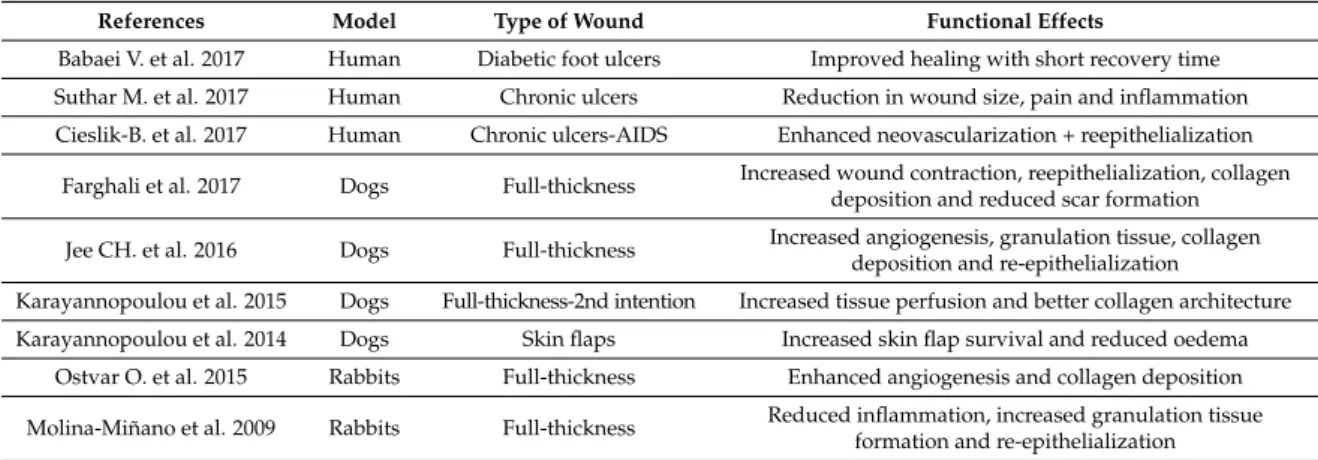Platelet rich plasma : new insights for cutaneous wound healing management / Deborah Chicharro Alcántara, Mónica Rubio Zaragoza, Elena Damiá Giménez, José María Carrillo Poveda, Belén Cuervo Serrato, Pau Peláez Gorrea and Joaquín J Sopena Juncosa
Texto completo
Figure




Documento similar
Fibroplasia, fibroblast proliferates in the deeper parts of the wound. These fibroblasts begin to synthesize small amounts of collagen which acts as a scaffold for migration and
In CCN2(IV)-injected mice, renal MCP- 1 and RANTES gene expression was significantly increased in response
Similar results were found when CMS1 group was analysed, being metabolism related pathways such as glycolysis and pyruvate metabolism overrepresented in the Wound
Conversely, the evaluation of mRNA levels of genes encoding pro-in flammatory cytokines [interleukin-1 beta (IL-1 b ), tumor necrosis factor alpha (TNF a ), and transforming
The skin phenotype of TR KO mice with defective response to proliferative stimuli, retarded hair growth and impaired wound healing would be compatible with the existence of a defect
Catalase treatment decreases transforming growth factor-β1 (TGF-β1) mRNA and promoter activity, inhibits the binding of AP-1 to TGF-β1 promoter and reduces the 3TP-Lux
Complex wounds can be frustrating for both the health care providers and patients but the early identification of risk factors and suitable treatment plan can improve the chances
The wound care doctors will instruct the patients about preventive measures to avoid infection or any complications from surgery as well as taking care of surgical wounds at home..
